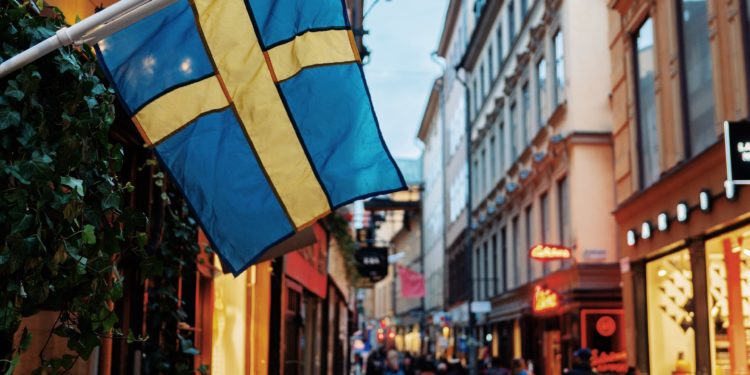‘Sweden Day’ is celebrated annually in the so-called “elongated country”, although it’s fair to say that the 2023 iteration of this holiday was particularly special.
After all, this year’s long-awaited National Day on June 6th marked 500 years of Sweden’s existence as an independent nation state, with the King and Queen taking part in a special ceremony at Skansen (Stockholm’s open-air museum) to help celebrate this momentous occasion.
In this post, we’re going to take a closer look at the beginnings of Sweden Day, while appraising some of the nation’s greatest commercial successes and why they inspire such pride in natives!
The Origins of Sweden’s National Day
While Sweden first gained dependence upon leaving the Scandinavian Kalmar Union in 1523, the concept of celebrating ‘National Day’ annually on June 6th only came to pass in 1916.
At this time, Sweden was beginning to experience significant growth and expansion as a country, after the relative demise of the ‘Swedish Empire’ that had occurred since the early 18th century. This resurgence imbued the natives with a sense of pride and romanticised nationalism, which saw swathes of national museums opened and June 6th become a day of commemoration.
Interestingly, it took a further 89 years for June 6th to become a national or bank holiday, with this broadly considered to be the date that Sweden broke away from the Kalmar Union as King Gustav Vasa ascended to the throne.
Make no mistake; this is now a day to celebrate the national flag and everything that the country stands for, with street parties commonplace and seen across the length and breadth of the nation!
Sweden’s Greatest Commercial Successes
Arguably, Sweden remains most synonymous with innovation and creativity, with this able to thrive in a country that also boasts excellent business infrastructure. To this end, there are a number of billion-dollar companies based in Sweden, many of which have blazed a trail for others to follow in terms of customer service, value for money and delivering truly innovative products.
So, let’s take a closer look at three of Sweden’s biggest and most influential brands in the wake of the country’s national day, and what has made these entities so influential on the global stage.
#1. IKEA
Where else to start but with IKEA, which has built a globally renowned and dominant brand based on the emotional hook of providing furniture that can be built by each customer’s own hands.
This unique and compelling business model has also enabled IKEA to provide a diversity of products and furniture at relatively low costs, with an emphasis on designs that are simple, functional and easy to assemble.
Since 2008, IKEA has been recognised as the largest furniture retailer in the world, with net revenue of €41.9 billion reported in 2021. To fulfil global consumer demand, the brand is also responsible for 1% of the world’s total commercial-product wood consumption, which is quite a staggering statistic for a single company.
IKEA is also an example of an innovative and forward-thinking brand, with a sustainable business model that has sought to do away with plastic packaging and built a thriving presence on social media platforms such as Instagram and Twitter.
#2. H&M
Next up is fashion brand H&M, which boasts a long and illustrious history that dates all the way back to 1947.
The brand was known as Hennes back then, while it initially focused solely on women’s clothing. Some 27 years later, it acquired the hunting and fishing outwear brand Mauritz, creating the new abbreviated name H&M and incorporating men’s fashion lines into its offering.
Since then, the brand has scaled markedly and penetrated new international markets, with the first US store opening its doors in New York in the year 2000.
Today, it’s a global behemoth with a huge sphere of influence in the world of affordable fashion, while its focus on core ESG issues and workplace safety make it a true blazer in most sectors of significant contemporary importance.
#3. Volvo
Not only does Volvo remain one of the best and most iconic automotive brands in the world, but it also played a pivotal role in the invention of the ‘three point’ seat belt.
Designer Nils Bohlin successfully incorporated the seat belt into Volvo vehicles in 1959, with this making these the safest and most sought-after cars among families.
It also saw the same three-point belt rolled out as standard across all other automotive brands, with Volvo voluntary giving up the details of the invention for the benefit of all motorists and consumers in the market for a new car.
This reflects the levels of innovation and customer focus that Volvo is renowned for, while the brand’s consumer-first approach and simple automotive designs continue to underpin a company that generated 32.06 billion Krona in net income last year.
The Bottom Line
Sweden Day is now a popular national holiday in the elongated country, as it provides a unique opportunity to celebrate the nation’s historic achievements and its impact on the wider world.
This is perhaps best reflected by Sweden’s biggest brands, which embody the nation’s core values of innovation, creativity and customer care and have more than made their mark in the global marketplace. To learn more about Sweden’s most successful and influential brands, you can also check out the detailed infographic below!

View Original Version (via Bedrageri.info).











































































